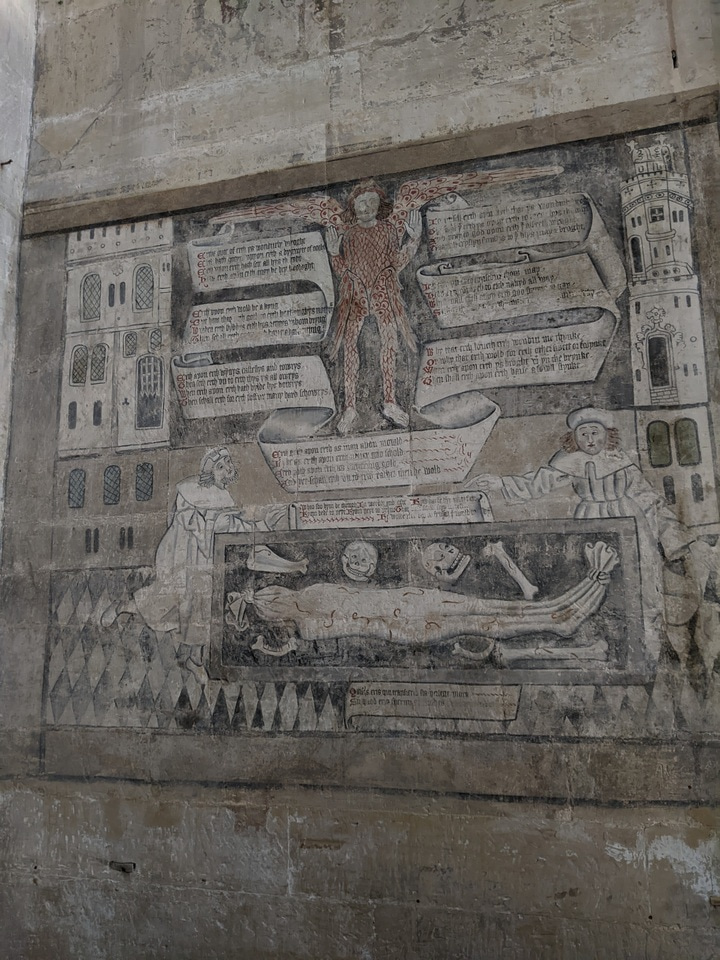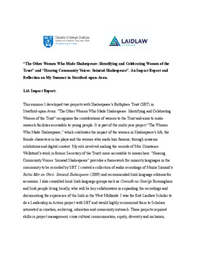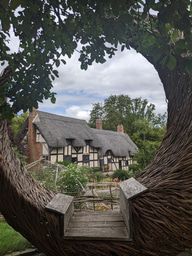Death Reawakened: ‘Erthe upon Erthe’, ‘Whosoo hym be thowght’ and Shakespearean Censorship Equivocation in Post-Reformation England (1531-1616).

‘Erthe upon Erthe’ and ‘Whosoo hym bethowght’ are two poems depicted in the ‘Allegory of Death’ mural in the Guild Chapel in Stratford upon Avon which encourage the viewer to reflect on their mortality and caution against materialistic ambition. In an act of compliance with post-Reformation censorship legislation, John Shakespeare recorded the order for the murals to be whitewashed in 1564 before the birth of his son William. They remained out of sight until they were temporarily uncovered in 1804 and restored in 2016 as part of the ‘Death Reawakened’ project – the whitewash actually contributed to the preservation of the murals. When I visited the Guild Chapel I felt there were a number of uncanny similarities between the murals and Shakespeare’s works which led me to wonder if the poems were published in other versions that were accessible to Shakespeare. With two immediate family members identified as recusants (John Shakespeare being one of them), it would have been in the playwright’s interest to conceal allusions to censored artwork. I am therefore sceptical that a conclusive thread can be traced between the mural and Shakespeare’s writing. However, I think this is an exciting opportunity to study the influence of these surviving examples of pre-Reformation art, as we can infer from various plays that these themes were widely considered. Instead of imposing Shakespeare's writing onto the mural, this project would demonstrate the potency of inclusivity in art, as these paintings, (like theatre), appealed to a range of socio-economic groups and levels of education.
By conducting a close reading analysis of the poems, the mural’s images and Shakespeare’s plays (I plan to focus on Hamlet, Julius Caesar, Macbeth and Richard III), using databases such as Early English Books Online (EEBO), the Stationer’s Register (1557-1616) and the Digital Index of Middle English Verse I will attempt to locate surviving versions of ‘Erthe upon Erthe’ and ‘Whosoo hym bethowght’ dated between 1531 and 1616, the year of John Shakespeare’s birth and William Shakespeare’s death respectively, reviewing the concordances containing every recorded variant spelling of ‘earth’ between 1531 and 1616 on EEBO. I will assess their accessibility and determine if they could contribute to Shakespeare’s source material and what this tells us about the implementation of art censorship in Early Modern England for two weeks. Another two weeks will be assigned to researching the censorship of post-Reformation art in practice and a final two weeks collating my findings and interpretations into a research paper and poster.
The uncertainties around Shakespeare’s private life have expanded the appeal of his identity as a brand, which various charity-led tourist attractions in Stratford-upon-Avon and London use to support their local economies, creating educational resources and innovating cultural experiences for future generations. Their services would not exist without the work of a relatively private man, whose influence has transcended theatre, literature, and his personal control. Evaluating the knowledge we possess, along with the information that remains to be discovered plays a crucial role in remembering the real person behind the marketing and tourism industries.





Please sign in
If you are a registered user on Laidlaw Scholars Network, please sign in